Users always expect PDF conversion to deliver both high fidelity and editability. With the rise of AI, that expectation is now within reach.
ComPDFKit's latest Conversion SDK V3.0 introduces a full-stack technical upgrade to solve long-standing issues in traditional PDF conversions—such as broken layouts, confused paragraph structure, and misplaced tables.
Here, we take an in-depth review to evaluate V3.0's performance in complex layout restoration, editability, structural elements recognition, and detail preservation.
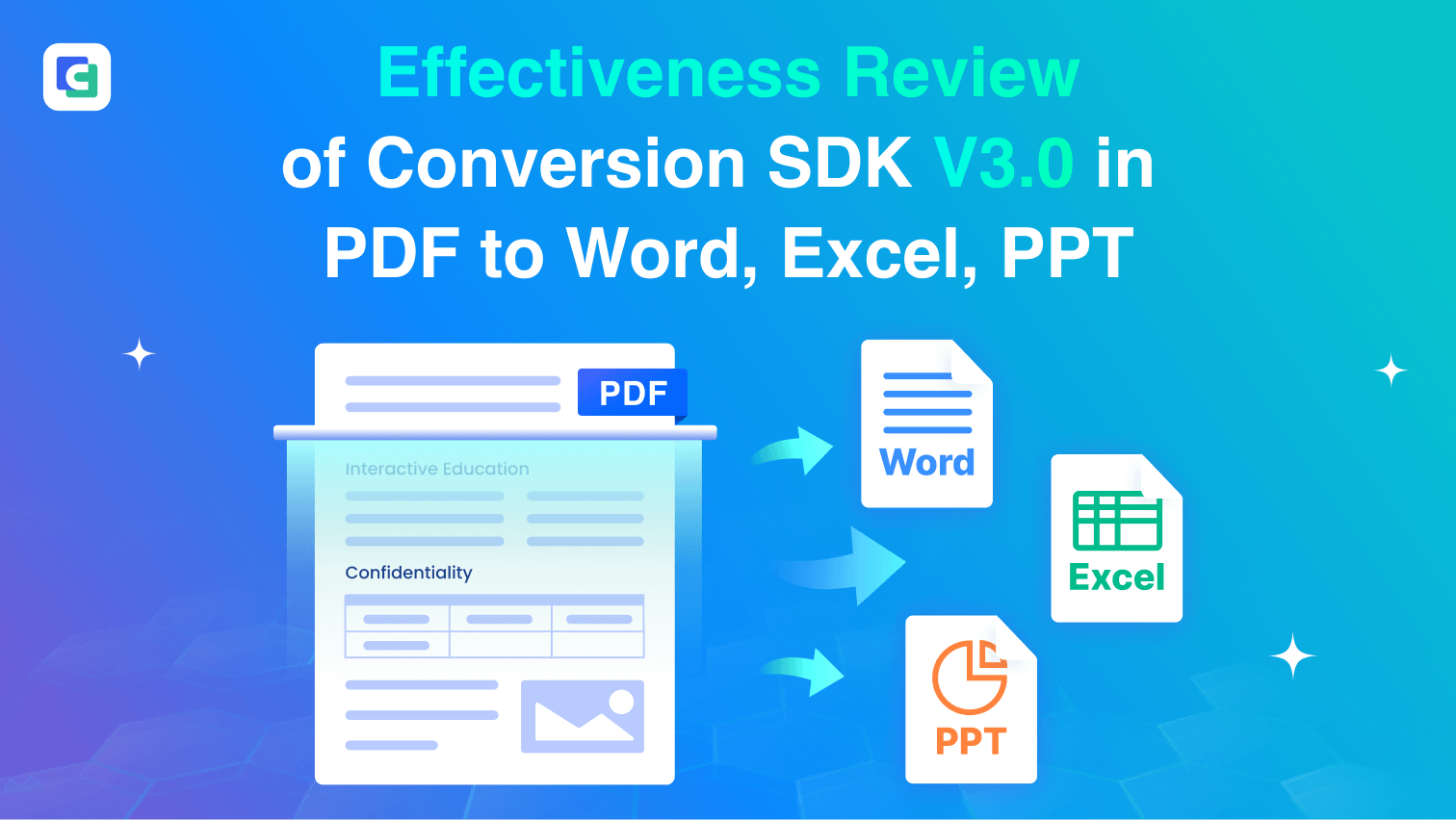
What’s New in Conversion SDK V3.0
-
Fine-tuned PPYoloE AI model with the million-level document training dataset
-
All-scenario layout analysis algorithm and next-gen table recognition algorithm
-
Restructure data structure, conversion process, PDF parsing and output modules
-
Hybrid Layout: Combine Flow Layout with Fixed Layout to maintain the original layout as well as the text flow, improving the editability of the converted file
-
Enterprise-Grade Performance: Converts thousands of pages in seconds with 50% faster speeds, boosting efficiency for large-scale document needs.
The Scope of Conversion SDK V3.0 Test and Review
-
Conversion SDK Versions for Test:
-
V3.0: Windows Demo built with the latest Conversion SDK V3.0
-
V2.0: Online PDF converter on our website, powered by the V2.0 API
-
Conversion formats: PDF to Word, Excel, PowerPoint
-
Document types and test points:
|
Types |
Test Points |
|
Text-image mixed layouts Multi-column layouts Includes elements like headers, footers, numbered lists, TOC |
Layout Text flow and paragraph continuity Structural elements |
|
Borderless & irregular complex tables Tables span multiple pages Multi-page tables with cross-page merging |
Merged/split cell Text-to-cell matching Structural continuity across pages Style like colors, alignment, fonts |
Note: All files are sourced from public internet resources. For any copyright concerns, please contact us for removal.
Conversion Results and Comparison: V2.0 vs V3.0
Results of PDF to Word
Text-image mixed layout
We selected a PDF with a complex mix of text and images—more intricate than typical daily documents.
As you can see, both V2.0 and V3.0 preserve the overall layout. In V2.0, text boxes overlap images or extend beyond their original boundaries—issues that are well-handled in V3.0 with Hybrid Layout. However, since arrow text boxes in V3.0 are currently recognized as images, multi-line text therein is restored using a Fixed Layout, which makes it look messy. This issue is already on the fix list.
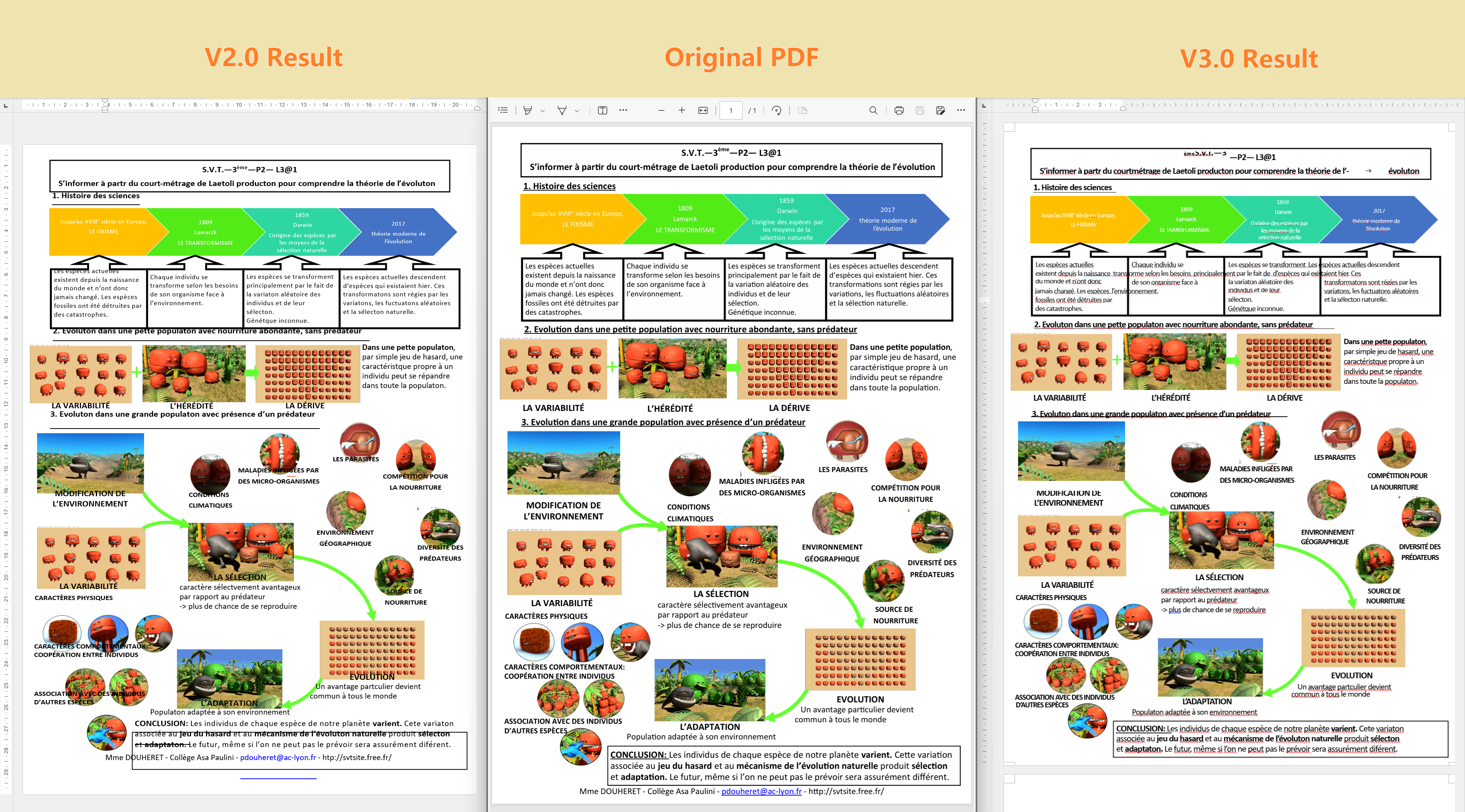
Multi-column layouts
Here, we select a larger PDF file with a two-column layout and embedded images.
When converting it to Word, V2.0 maintains the two-column structure but some lines are separated, causing incoherent text flow. In contrast, V3.0 better restores both the multi-column format and text flow, though it still has some spacing issues.
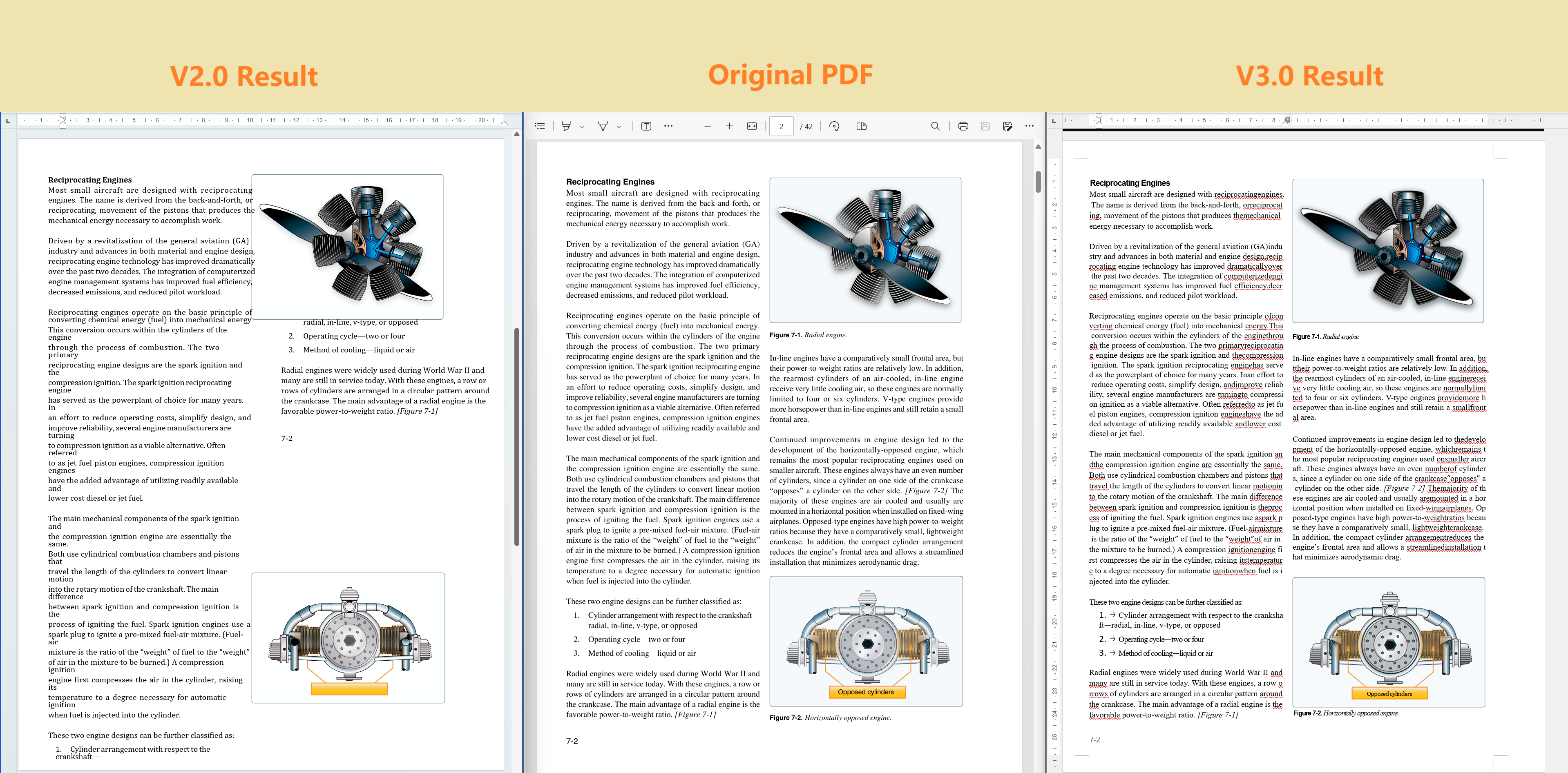
Text flow and editability
When converting a text-heavy, two-column PDF, the left GIF (V2.0 result) shows that each line ends with a line break, meaning each is treated as a separate line or text box. This causes the layout to shift when editing. In contrast, the right GIF (V3.0 result) shows that every paragraph is recognized as a paragraph, therefore, all text is fully reflowable without unnecessary text boxes, delivering a natural editing experience.
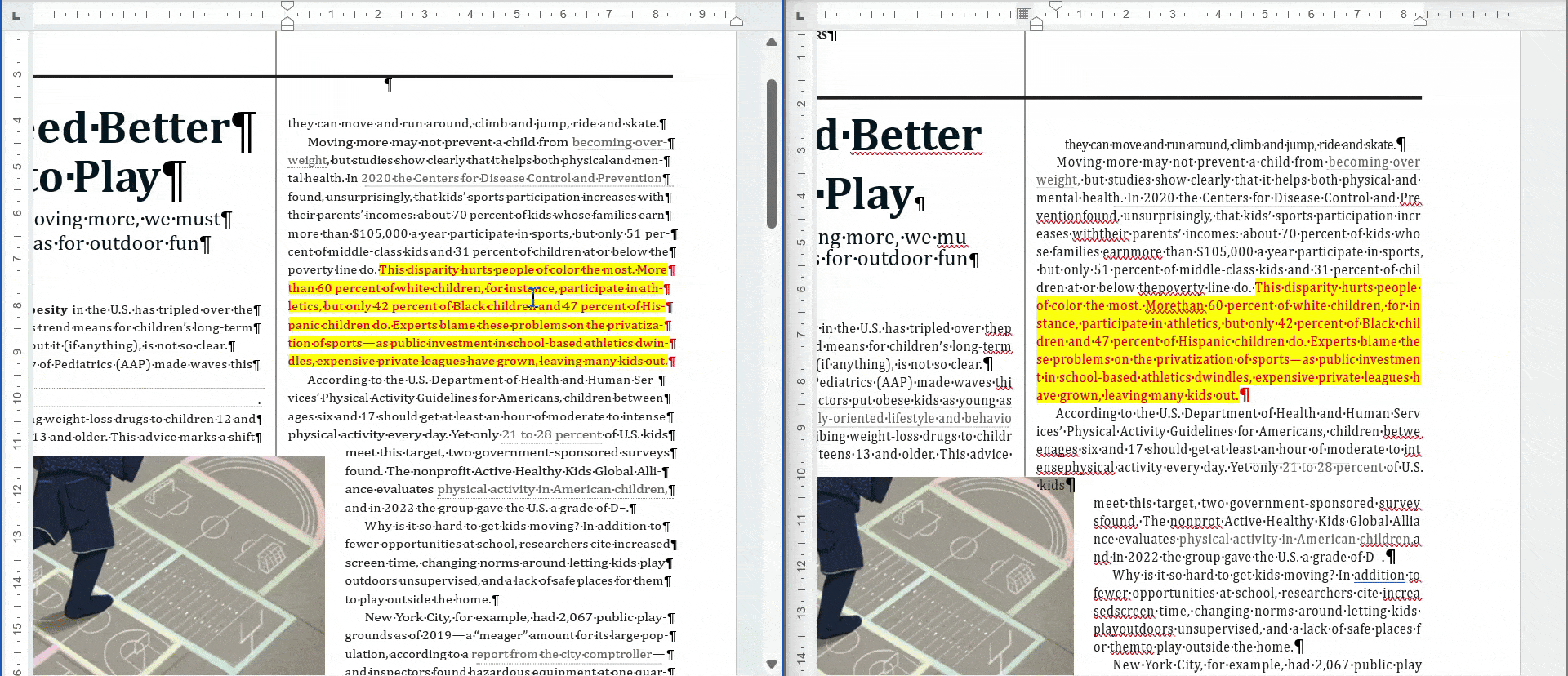
Structural elements
In order to test the reduction consistency of the structural elements, we chose an examination paper with headers and lists.
Headers and footers
In the V2.0 PDF to Word conversion, the header appears intact—but entering header editing mode reveals that there is nothing for editing. This indicates V2.0 restores the header as plain text instead of a true header element. In contrast, V3.0 correctly converts it into an editable header section.
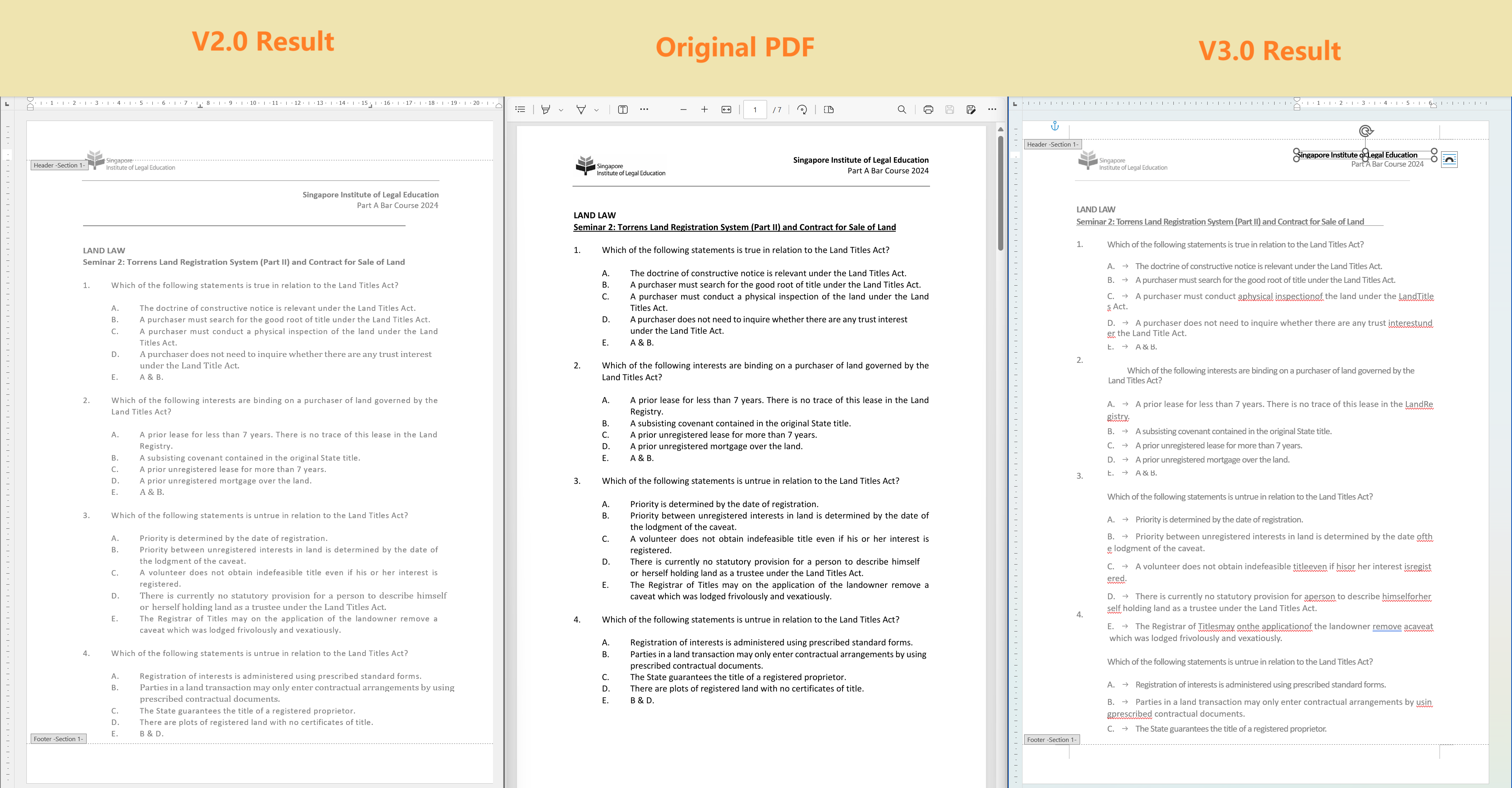
Bullets and numbered lists
In the V3.0 result, the multiple-choice questions are correctly recognized as numbered lists, with the Numbering option visibly active—indicating true structural elements. On the other hand, V2.0 still treats them as plain text instead of list structure.

Results of PDF to Excel
Standard table
Both Conversion SDK V2.0 and V3.0 perform well in converting PDF to Excel, accurately mapping text into the correct cells. Visual elements such as background colors, borders, and text alignment are largely preserved in the output.
However, a closer look reveals some differences. In the V2.0 result, the right side of the table has the red background fill that doesn’t exist in the original PDF. Meanwhile, V3.0 fails to retain the original border color.
These style inconsistencies may not be critical; what's more important is how data is handled: V3.0 correctly categorizes the numeric values as Number, making them ready for calculation or analysis, whereas V2.0 treats them as General, which could limit functionality in data processing tasks.

Non-standard table
In borderless tables, the Excel output generated by V2.0 shows a cluttered layout—with misaligned text, inconsistent row heights, and unnecessary empty columns. In contrast, V3.0 delivers a much cleaner and more structured result, accurately matching text to cells and maintaining a well-organized format throughout.
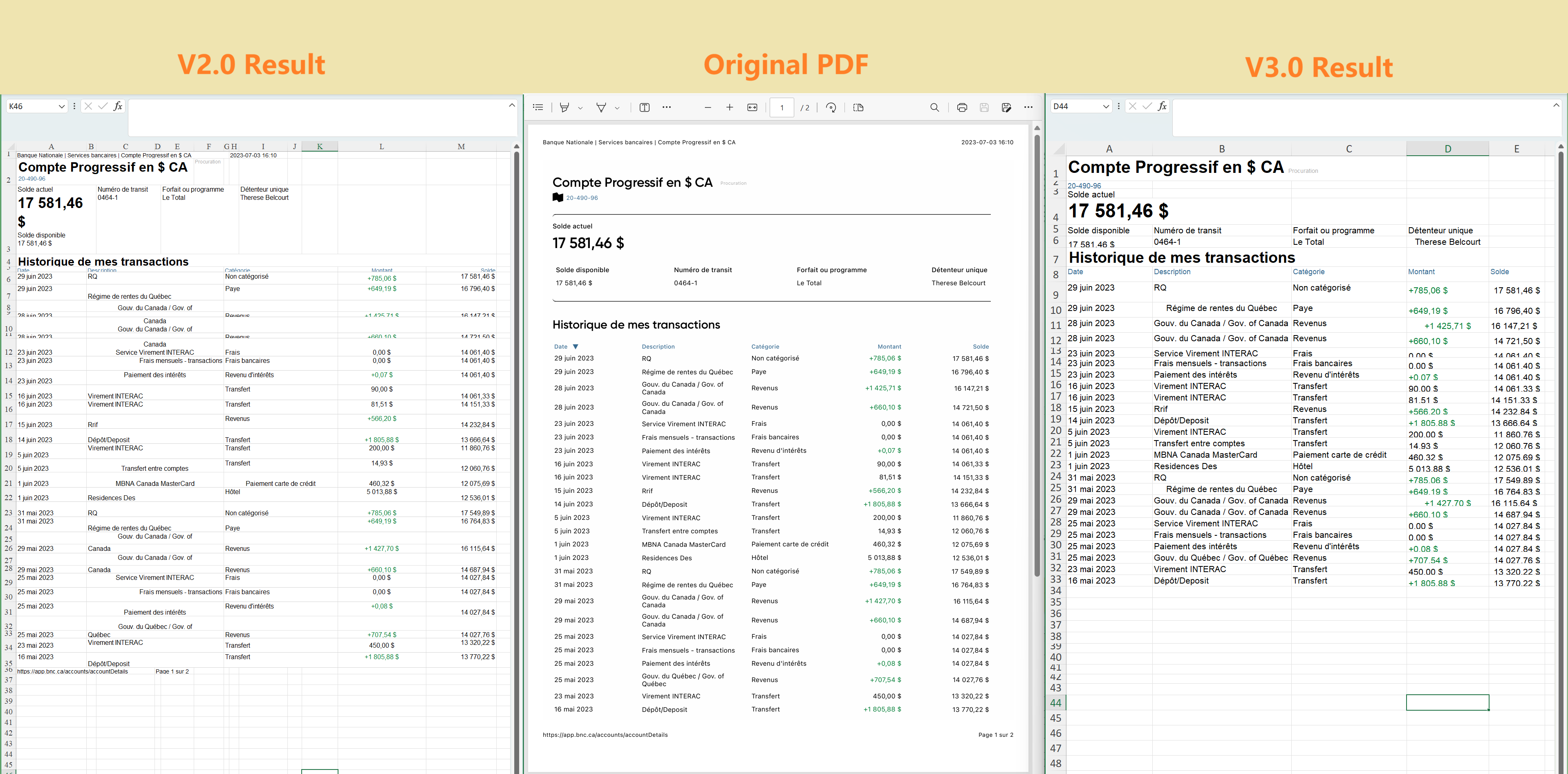
Result of PDF to PowerPoint
Like Word, PowerPoint retains structural elements during conversion—lists, tables, and table of contents remain fully editable instead of being flattened into plain text.
In the below PDF, Conversion SDK V3.0 preserves all content and layout elements on the converted PPT, while V2.0 misses the content in the top-right text box. Additionally, V3.0 restores each text box with reflowable content, whereas V2.0 merges all text into a single block, losing the original structure.
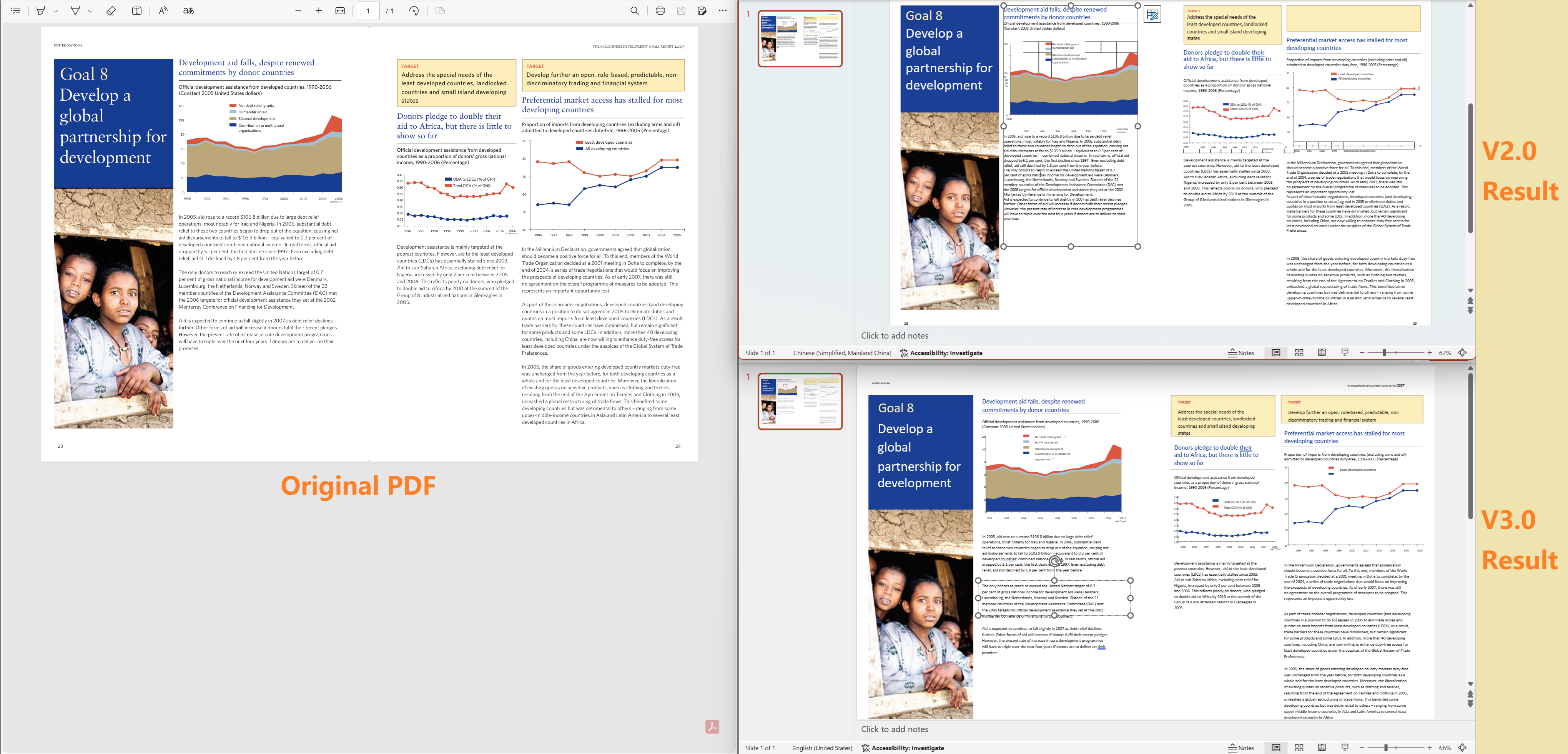
Conclusion
Through this effectiveness review, you can feel that ComPDFKit Conversion SDK V3.0 delivers a significant enhancement in PDF-to-Office conversion capabilities compared to V2.0.
The new hybrid Flow + Fixed Layout model powered by AI models effectively bridges the gap between accurate visual reproduction and seamless content modification.
With notable improvements in structural elements restoration, layout accuracy, and content editability—especially in complex cases like multi-column documents, detailed tables, and mixed text-image layouts—ComPDF demonstrates the value of its full-stack technical upgrade.
Experience V3.0 firsthand with our live demo, or reach out to our sales team for customized enterprise integration solutions.